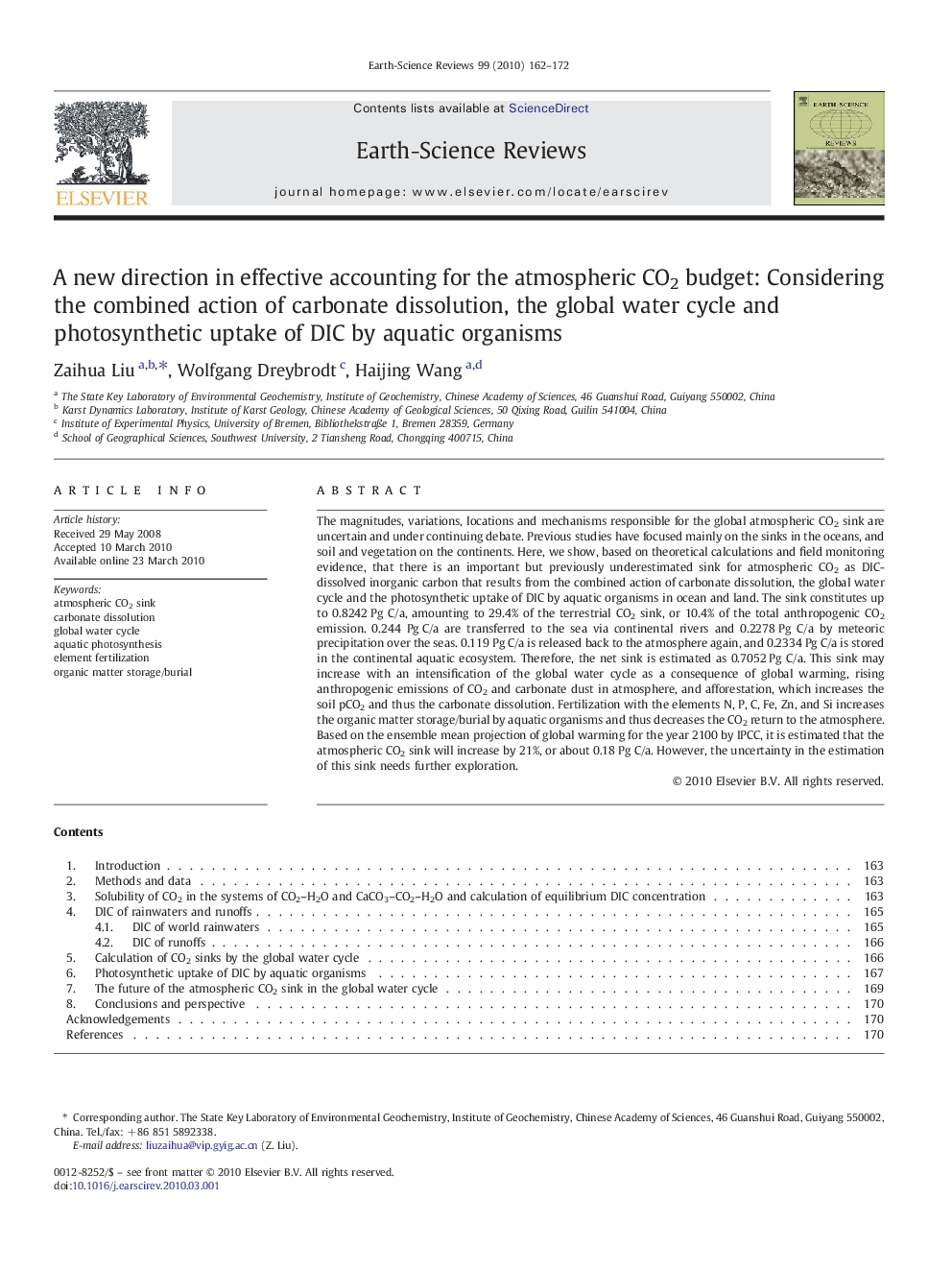| کد مقاله | کد نشریه | سال انتشار | مقاله انگلیسی | نسخه تمام متن |
|---|---|---|---|---|
| 4726139 | 1640015 | 2010 | 11 صفحه PDF | دانلود رایگان |

The magnitudes, variations, locations and mechanisms responsible for the global atmospheric CO2 sink are uncertain and under continuing debate. Previous studies have focused mainly on the sinks in the oceans, and soil and vegetation on the continents. Here, we show, based on theoretical calculations and field monitoring evidence, that there is an important but previously underestimated sink for atmospheric CO2 as DIC-dissolved inorganic carbon that results from the combined action of carbonate dissolution, the global water cycle and the photosynthetic uptake of DIC by aquatic organisms in ocean and land. The sink constitutes up to 0.8242 Pg C/a, amounting to 29.4% of the terrestrial CO2 sink, or 10.4% of the total anthropogenic CO2 emission. 0.244 Pg C/a are transferred to the sea via continental rivers and 0.2278 Pg C/a by meteoric precipitation over the seas. 0.119 Pg C/a is released back to the atmosphere again, and 0.2334 Pg C/a is stored in the continental aquatic ecosystem. Therefore, the net sink is estimated as 0.7052 Pg C/a. This sink may increase with an intensification of the global water cycle as a consequence of global warming, rising anthropogenic emissions of CO2 and carbonate dust in atmosphere, and afforestation, which increases the soil pCO2 and thus the carbonate dissolution. Fertilization with the elements N, P, C, Fe, Zn, and Si increases the organic matter storage/burial by aquatic organisms and thus decreases the CO2 return to the atmosphere. Based on the ensemble mean projection of global warming for the year 2100 by IPCC, it is estimated that the atmospheric CO2 sink will increase by 21%, or about 0.18 Pg C/a. However, the uncertainty in the estimation of this sink needs further exploration.
Journal: Earth-Science Reviews - Volume 99, Issues 3–4, May 2010, Pages 162–172